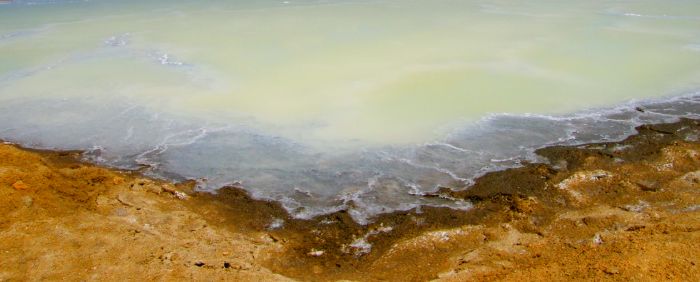
Ten years of space observations from the SeaWifs satellite have shown the extension of areas with very low plankton production. According to the authors of the study, the cause is the warming of surface water, which slows vertical trade.
Since 1997, the Sea-Viewing Wide Field-of-view Sensor ( SeaWifs) satellite , which could be translated as a wide-field oceanic sensor, has been scrutinizing chlorophyll production in the global ocean. In low-altitude polar orbit , it rotates 14 times a day around the globe and flies over any point of the surface at one time or another. His instrument analyzes the light reflected by the ocean in eight bands of the spectrum (two of which infrared, to allow correction of atmospheric effects). Thanks to its precise establishment (with a resolution of one kilometer) the production of chlorophyll of the oceans.
Jeffrey Polovina and his team ( US National Marine Fisheries Service , Honolulu, Hawaii) publish in the journal Geophysical Research Letters the record of ten years of observation, between 1997 and 2006. His observation is clear: apart from the south of Indian Ocean, all the ” ocean deserts ” have seen their surface increase. The extension is 6.6 million square kilometers, or 15% more.
By the way, what is an ocean desert called ? The expression may seem strange but it is well that we designate large areas of the ocean where the density of living organisms is very low. We meet them in the middle of the oceans. Around the great basins (Atlantic, Pacific, Indian Ocean) form vast circular currents, called whirlpools , or gyres in English, coming to lick the continents. At the coast, the decrease in depth and the greater temperature variations between summer and winter generate vertical movements , upward ( upwellings ) or downward ( downwellings)). The former have a beneficial effect on life as they rise from the depths of nutrient salts accumulated in the depths of the ocean. The phytoplankton (plant) grows more, the plankton animal that feeds, prosperous and in turn the entire food chain follows the movement. Fishermen have always known that they do most of their catch near the coast. Far offshore, in the center of the great whirlpool, nutrient intake is low and life is much rarer.
An extension at least ten times faster than expected
In ten years of orbits, SeaWifs has generated countless colorful maps (in false colors ) showing large rings (usually represented in green) surrounding areas (mostly blue). In the former, the production of chlorophyll is high while it is low in seconds.
These are the areas that oceanographers have seen grow over the years. The warming of the waters explains the phenomenon well since it increases the stability of the vertical stratification : warmer, the surface waters are less likely to descend while the cold waters of the bottom go back more difficult. Vertical movements are dwindling and plant production suffers. All climate modelspredicted this effect, to a quantitative ready factor, and large: according to SeaWifs data, the extension of these ocean deserts during the last nine years is 10 to 25 times faster than predicted by different models !
What is the cause of global warming? Of course, we think about the warming of the atmosphereand the role of human activities. But the researchers do not have the proof. A decade of observations is a short period for the mechanics of the global ocean and natural variations could come into play. Unfortunately, SeaWifs will not stay in orbit long enough to answer this question. It will take his successors and continue to take the pulse of marine life…